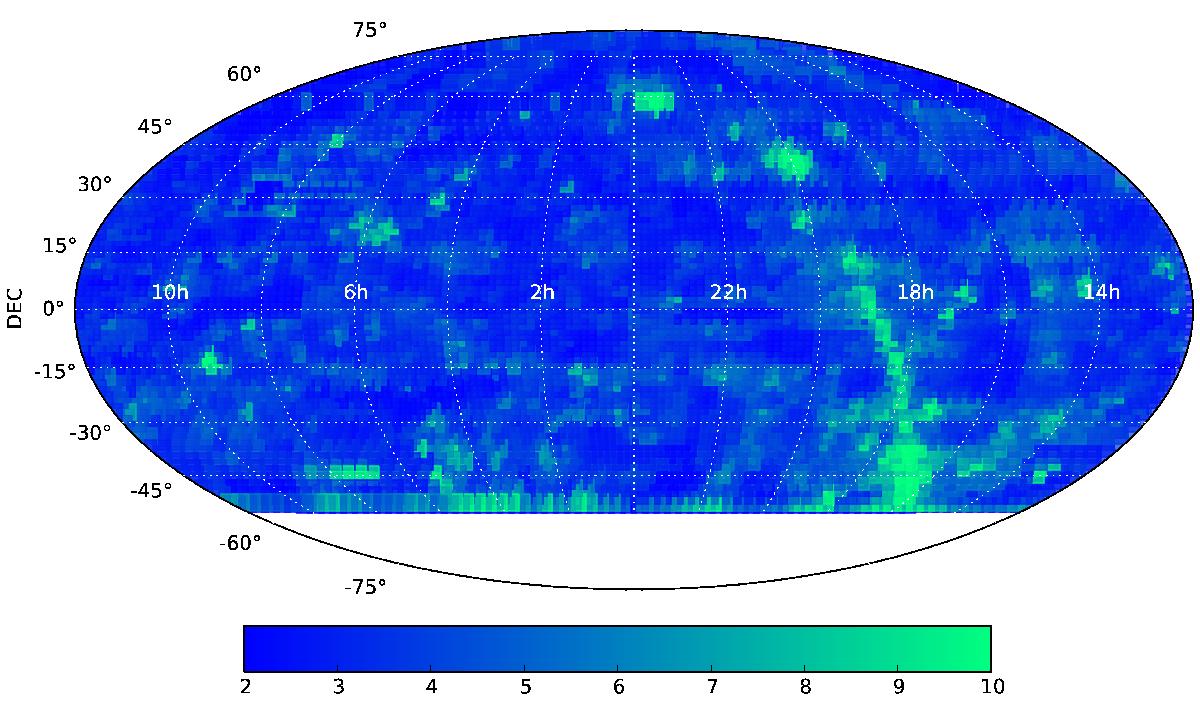Fig. 8

A Mollweide projection plot in equatorial coordinates showing the distribution of the mosaic background rms noise as a function of the sky position for the TGSS ADR1. The rms noise is mostly smooth with typical deviations between 2.5 and 5 mJy beam-1, with a median of 3.5 mJy beam-1. The noise is higher in the Galactic plane due to increased receiver brightness temperature from the diffuse synchrotron emission of the Galaxy. There is a increase in the rms noise at low declinations since these observations were taken at lower elevation angles than the rest of the data. Localized regions of higher rms noise are due to known bright radio sources at this frequency such as Cas A, Cen A and Cyg A.
Current usage metrics show cumulative count of Article Views (full-text article views including HTML views, PDF and ePub downloads, according to the available data) and Abstracts Views on Vision4Press platform.
Data correspond to usage on the plateform after 2015. The current usage metrics is available 48-96 hours after online publication and is updated daily on week days.
Initial download of the metrics may take a while.


